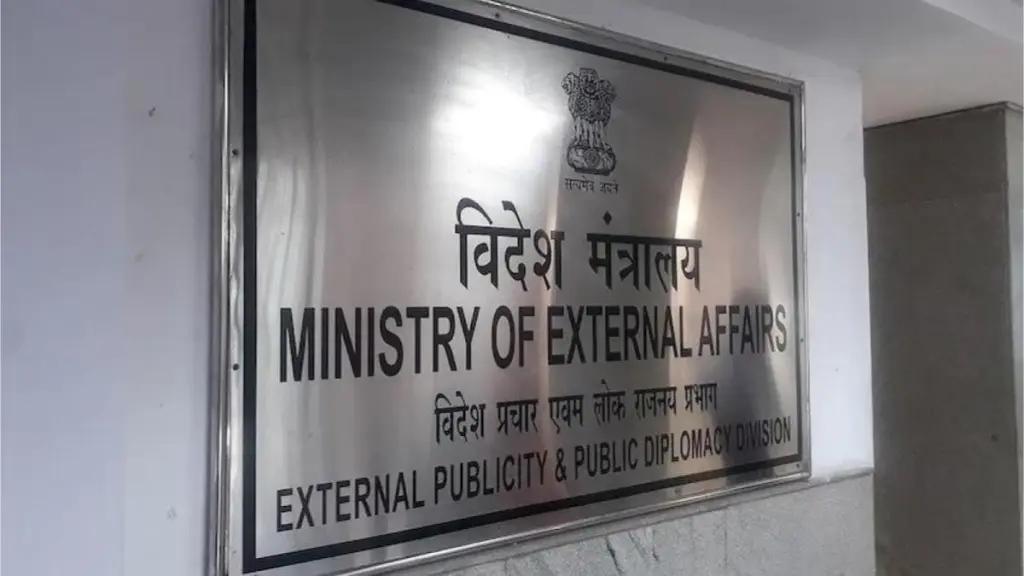
Title: De-dollarisation not part of India’s financial agenda: MEA
In a recent development, the Ministry of External Affairs (MEA) has clarified that India is not working towards de-dollarisation within the framework of BRICS (Brazil, Russia, India, China, and South Africa). This statement comes on the heels of Brazilian President Luiz Inácio Lula da Silva’s comments, where he suggested that BRICS could explore the possibility of a new or local currency for shared trading among its members. The MEA spokesperson, Randhir Jaiswal, has categorically stated that de-dollarisation is not part of India’s financial agenda.
The MEA’s clarification has shed light on the current stance of the Indian government regarding the use of the US dollar as a global reserve currency. The news has sparked curiosity among economists and policymakers, who are keen to understand the implications of such a move on the global economy. In this blog post, we will delve into the significance of de-dollarisation, the potential benefits and challenges, and the MEA’s stance on the issue.
What is de-dollarisation?
De-dollarisation refers to the process of reducing or eliminating the use of the US dollar as a global reserve currency. This can be achieved by introducing alternative currencies, such as a new international currency, or by promoting the use of local currencies for international transactions. De-dollarisation is often seen as a means to reduce dependence on the US dollar and promote greater economic sovereignty among nations.
Potential benefits of de-dollarisation
Proponents of de-dollarisation argue that it can lead to several benefits, including:
- Reduced dependence on the US dollar: By reducing the use of the US dollar, countries can gain greater control over their monetary policies and reduce their dependence on the US Federal Reserve.
- Increased economic sovereignty: De-dollarisation can help countries to reduce their exposure to US economic policies and gain greater autonomy in their economic decision-making.
- Promotion of regional currencies: De-dollarisation can promote the use of regional currencies, such as the euro or the yuan, as alternative reserve currencies.
- Reduced volatility: A reduction in the use of the US dollar can lead to reduced volatility in currency markets and a more stable global financial system.
Challenges of de-dollarisation
While de-dollarisation can offer several benefits, it also poses several challenges, including:
- Complexity: De-dollarisation would require significant changes to international financial systems, including the establishment of new institutions and regulations.
- Lack of trust: A new international currency or regional currency would require a high degree of trust among nations, which can be challenging to establish.
- Fragmentation: De-dollarisation could lead to fragmentation of the global financial system, with different regions adopting different currencies and payment systems.
- Increased risk: De-dollarisation can increase the risk of currency fluctuations and exchange rate risks, particularly for countries with weaker economic fundamentals.
MEA’s stance on de-dollarisation
The MEA’s clarification that India is not working towards de-dollarisation within BRICS has sparked controversy. The statement has been seen as a departure from Brazil’s suggestion of exploring a new or local currency for shared trading among BRICS members. However, the MEA’s stance can be seen as a pragmatic approach to the issue.
India’s economy is deeply integrated with the global economy, and a sudden shift away from the US dollar could be destabilizing. Additionally, the Indian rupee is not a widely accepted reserve currency, and a move towards de-dollarisation could require significant changes to the country’s financial infrastructure.
Conclusion
In conclusion, the MEA’s clarification that India is not working towards de-dollarisation within BRICS has shed light on the country’s stance on this issue. While de-dollarisation can offer several benefits, it also poses significant challenges. The MEA’s pragmatic approach to the issue is likely to be shaped by the country’s economic interests and its need to maintain stability in the global financial system.
As the global economy continues to evolve, it is likely that the issue of de-dollarisation will remain a topic of debate among economists and policymakers. However, for now, it appears that India is not actively pursuing a move towards de-dollarisation.






